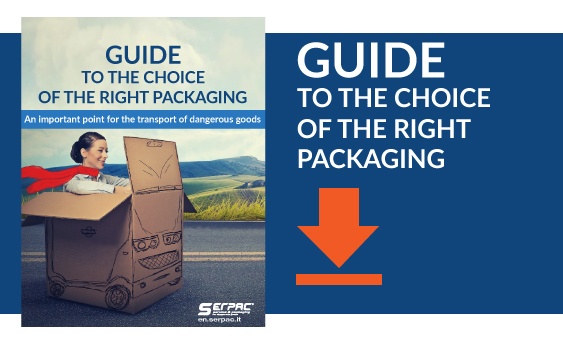How to choose the right packaging for the transport of dangerous goods

Transporting goods is an activity of unquestionable importance. The exchange of material goods fosters economic and human relationships between people, and therefore must always be managed with awareness, optimizing the available economic resources and at the same time ensuring the safety and quality of the transport itself.
When transporting dangerous goods, careful attention must be paid when organizing their movement, especially in regards to their packaging.
Good packaging makes the difference and should have many requirements: protect goods, make them travel safely, avoid theft, make storage simple and not be too expensive, both in terms of the materials used and the time needed to make packaging.
When dealing with dangerous goods, the primary qualities of packaging are of course linked to protection and safety: transport, people and the surrounding environment. In this regard, the packaging market is vast, because it provides logistics operators with a variety of choices, which, to say the least extensive. On the one hand this can be reassuring, on the other, it can generate confusion and indecision.
On balance, therefore, how does one move to identify the right packaging for the transport of dangerous goods? Certainly, not focusing on a packaging either external or internal, but looking at the different options suitable to the product you are about to send, and, also keeping in consideration the mode of transport: by road, rail, inland waterway, sea and air.
External and internal packaging: pay attention to both
The outer packaging is that which is immediately visible, and certainly is the first that comes to mind when thinking of newly packaged goods ready to be transported. The most classic external packagings for dangerous goods are plastic cans, wooden crates, cardboard boxes, cardboard drums, plastic fabric bags, plastic crates, and metal drums.
Internal packagings for dangerous goods (mainly made of plastic, glass, metal) always require an external packaging in order to be sent for transport, yet these should not be considered any less important, nor chosen with less care. Inner packagings are not just accessories! Even if these type of packagings are not visible from the outside, they in fact, perform many important functions . They preserve the goods, stopping them from moving about, preventing leaks, etc, and must therefore have specific properties.
For example, if shipping by air, the inner packagings must withstand a pressure difference specified by the legislation in force. When selecting combined packaging (external and internal), remember that all its components will "work together", and so, each has great importance.
4G, 4GV, LQ and EQ: the abbreviations to know in order to make the right choice
It is advisable to know some acronyms concerning packaging for dangerous goods: they will soon become familiar and will make choosing easier.
UN certified 4G cardboard boxes are available in different sizes and are those that can be used only in combination with the specific inner packaging with which they have been approved. Checking whether the 4G approved packaging you intend to use has been tested with the inner packaging you want to use is simple: just consult the certificate of approval.
While 4G is only suitable in combination with the specific inner packaging with which it has been tested, UN 4GV boxes can be used for the shipment of objects or inner packagings of any type, liquid or solid, belonging to packaging groups I, II, III.
For shipments of dangerous goods in limited quantities, known as the acronym LQ, and for those in exempt quantities, EQ, it would be a mistake to use any random packaging. Instead, it is necessary to use specific compliant boxes suitable to meet the requirements found in the different regulations (for example, for air shipments in limited quantities, packaging must successfully pass the 1.2 m drop tests and 3 m stacking test). On these packagings, special marks must also be applied.
These provisions should not surprise nor appear too stringent. Keep in mind that even if the quantity of the goods to be transported is limited, or falls within the exempt type, the product still maintains its risk, and therefore requires its special packaging.
